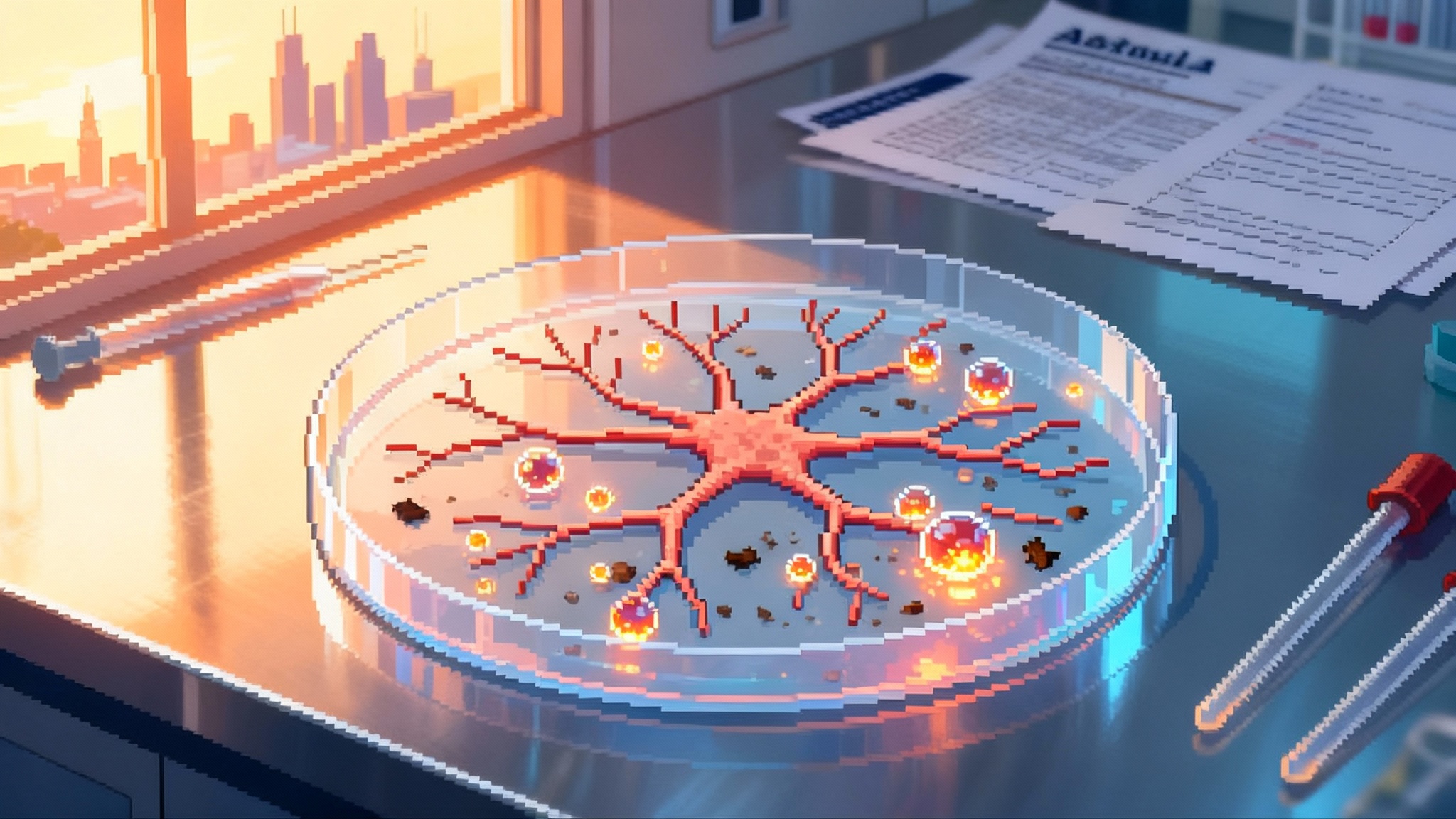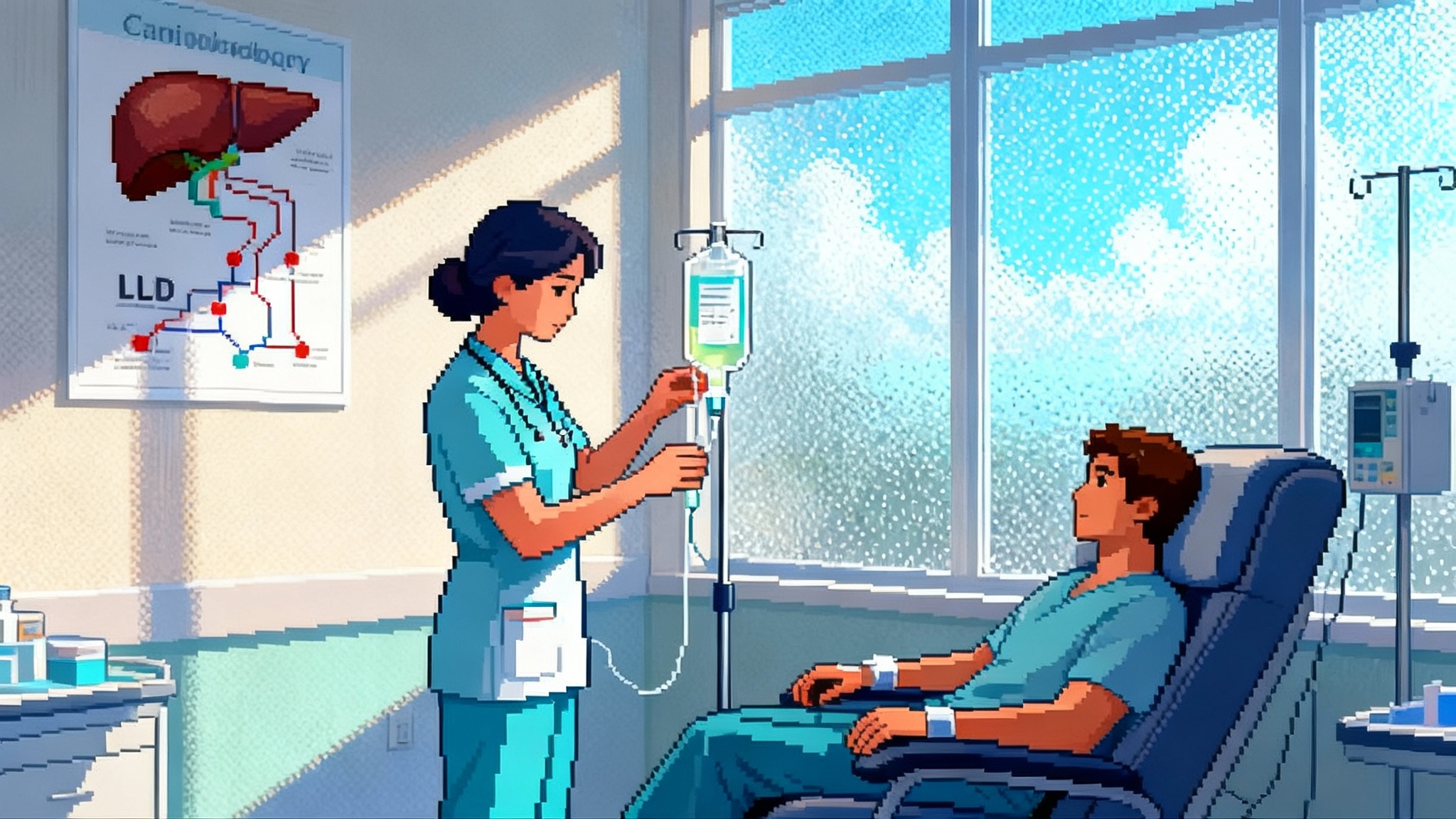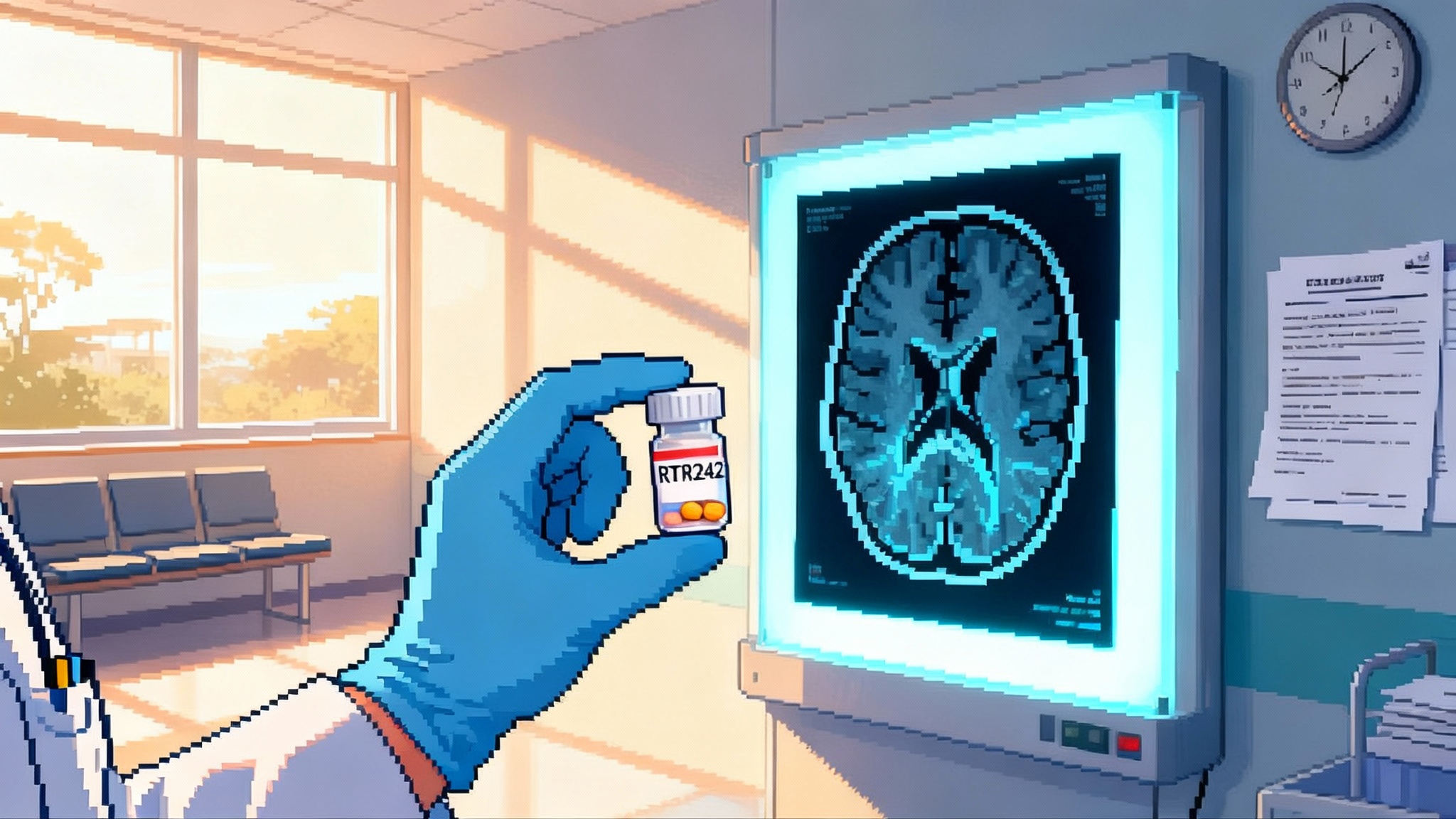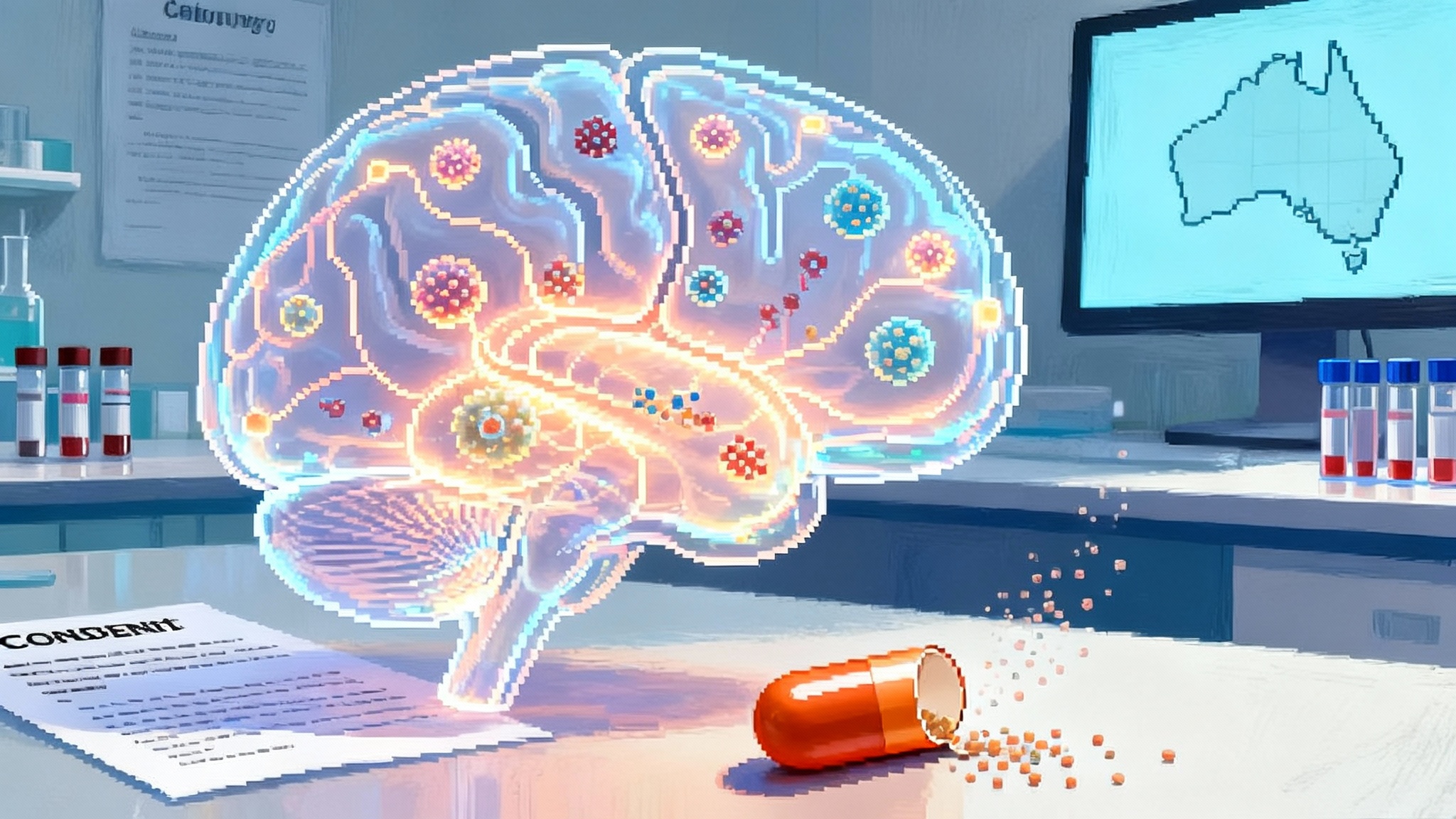Retro’s autophagy pill hits human trials via Alzheimer’s
Retro is steering its first human study to Australia, using Alzheimer’s as a clinical beachhead for RTR242, an autophagy‑boosting pill that could translate longevity biology into medicine faster.

Key takeaways
- Retro Biosciences plans first-in-human testing of RTR242 in Australia, using Alzheimer’s disease as the initial indication to prove autophagy can be tuned in people.
- Why Australia: faster study start-up, recognized data quality, and a clear bridge into US and EU programs.
- What to watch: pharmacodynamic proof of autophagy flux, safety over months, early cognitive and biomarker trends, and financing moves that follow data.
The Alzheimer’s beachhead
Retro Biosciences is preparing its first human experiment on a core longevity mechanism by doing what regulators recognize most readily: treat a disease. As of mid September 2025, the company says it plans to begin dosing in Australia before year end with RTR242, a small molecule aimed at restoring autophagy, with Alzheimer’s as the first indication. That timetable and geographic choice come from a recent Business Insider interview on Australia start, which also frames the company’s ambitions and tradeoffs.
This is a notable shift for the longevity sector. Instead of chasing an amorphous aging label, Retro is anchoring a broadly pro‑rejuvenation mechanism to a high‑need therapeutic area where endpoints, trial networks, and comparator drugs already exist. If progress happens, it will not look like a sweeping anti‑aging approval. It will look like a credible Alzheimer’s data package that also validates an aging pathway.
Why Alzheimer’s offers a faster path for longevity mechanisms
Longevity biotech has long faced a regulatory paradox. Aging drives disease, yet it is not a disease label in the US. That forces companies to pick indications where aging biology is causal and measurable. Neurodegeneration checks several boxes that can speed development:
- Large, unfortunately abundant patient pools and established trial networks that can randomize quickly.
- A deep clinical toolbox for measurement, from cognitive scales to imaging and fluid biomarkers, enabling signal detection in modest Phase 2 studies.
- Regulatory precedent for considering targeted mechanisms on biomarker trends while still demanding clinical benefit later. Even if autophagy modulation is distinct from amyloid clearing, the Alzheimer’s trial playbook exists in a way it does not for many other age‑linked conditions.
Australia adds practical advantages. Early stage studies can be set up quickly, agencies accept the data globally, and the environment is often used to bridge into US and EU programs. For a small molecule that must answer classic questions about dose, safety, pharmacokinetics, and CNS exposure, that speed matters. The goal is not to bypass rigor. It is to compress the calendar for early proof that the mechanism touches the right biology in humans. For a broader view on how regulators are adapting to longevity programs, see our look at the dog longevity blueprint.
Autophagy in brain aging, in one page
Autophagy is the cell’s recycling system. It identifies damaged proteins and organelles, sequesters them into vesicles, and routes them to lysosomes for breakdown and reuse. In a young neuron, autophagy runs like a quiet janitorial staff. With age, the process often stalls. Autophagosomes form but do not clear, lysosomes lose acidity and function, and chaperone systems get overwhelmed. The result is the slow buildup of cellular trash and dysfunctional mitochondria that amplify oxidative stress and inflammatory signaling.
In the brain, that slowdown collides with unique constraints. Neurons are long lived, rarely replaced, and energetically expensive. When proteostasis and mitophagy falter, neurons cannot divide to dilute the damage. They accumulate aggregates and broken parts until synaptic networks degrade. Autophagy is not a silver bullet, but it is hard to tell a coherent story of brain aging without it.
Researchers have long nudged autophagy via nutrient sensing pathways such as mTOR, AMPK, and sirtuins. Caloric restriction and certain stresses also turn the dial. But general induction is not the same as restored flux. You can step on the gas at initiation and still fail to empty the lysosomal backlog. That is why programs now focus less on simply turning autophagy on and more on getting cargo through the entire system.
What RTR242 is trying to prove
Retro describes RTR242 as an autophagy‑boosting small molecule for Alzheimer’s. It must answer two questions in people:
- Mechanism: does it increase autophagic flux in relevant tissues at tolerable doses?
- Disease translation: does that movement translate into biomarker changes tied to neurodegeneration and, eventually, into preserved or improved cognition?
Expect an intentionally standard path:
- Phase 1 to establish safety and dosing. Given the CNS target, Retro will need careful exposure modeling and tolerability checks in older adults.
- Early proof of biology using pharmacodynamic markers tied to autophagy and lysosomal function in blood or CSF, plus exploratory neurodegeneration readouts. Even directional movement would guide Phase 2 setup.
- Phase 2 to measure disease signals with biomarker alignment plus early functional outcomes to justify larger studies.
There are risks. Chronic autophagy activation can backfire if flux is incomplete or if neurons under metabolic stress tip into cell death. The dose window is nontrivial. On the flip side, even modest improvements in cellular clearance and mitochondrial quality control could cascade into healthier synapses and improved network function. In Alzheimer’s, where other mechanisms have delivered incremental gains, a complementary cellular repair approach has a credible rationale.
Why this differs from amyloid drugs and can pair with them
Clearing amyloid has delivered modest clinical wins with significant caveats. That addresses one pathologic hallmark. Autophagy intervention is upstream in the cellular housekeeping hierarchy. It targets the traffic jam that allows multiple forms of junk to pile up, not just one molecular species. If successful, an autophagy drug could pair with existing classes. One clears a specific toxin. The other improves the brain’s baseline ability to take out the trash. A clean monotherapy signal would be ideal, but combination studies are the logical future.
Why Australia, specifically
Early phase trials in Australia are often faster to initiate and can generate data that regulators elsewhere accept. Contract research organizations there have tuned playbooks for first‑in‑human studies, and sponsors can often proceed under a notification framework with rigorous ethics oversight. Add a competitive cost base and an experienced Alzheimer’s site network, and the case looks pragmatic, not exotic. The operational goal is straightforward: lock the logistics and analytics before larger US and EU trials where recruitment and endpoints drive timelines. For context on the broader longevity toolbox moving into the clinic, see GLP‑1s and longevity math.
The quiet influence of AI in Retro’s pipeline
Retro’s wider thesis includes cellular reprogramming and cell replacement, with a real role for AI. In August 2025, OpenAI and Retro reported that a custom protein engineering model called GPT‑4b micro produced engineered variants of reprogramming factors that boosted expression of pluripotency markers by more than fifty fold in vitro relative to wild type controls. Read the summary of the OpenAI and Retro protein work. That matters for RTR242 in two ways:
- It suggests Retro is building a stack where a repair‑the‑cell pill today can complement a replace‑the‑cell therapy tomorrow.
- It hints that the discovery engine could move faster than traditional wet labs alone. For a deeper dive on how AI is reshaping this space, see how AI reshapes aging R&D.
Funding signals and the Series A bar
Retro has been public about raising a large Series A to scale its pipeline. For a company chasing both small molecules and engineered biologics, burn can rise quickly. Investors will ask for one thing above all: human data that links mechanism to disease outcomes. Even a well executed Phase 1 with clean pharmacology can unlock partnerships, non‑dilutive funding, or crossover interest. A discernible biological signal in Alzheimer’s patients would move the goalposts further. On the flip side, if RTR242 shows no evidence of autophagy modulation in humans, funding will get tighter in a choosier market.
What this means for trial geographies over the next 12 to 24 months
Expect more US longevity startups to adopt a two step footprint. Start Phase 1 in Australia for speed, then migrate to US and EU once dosing, exposure, and early pharmacodynamic signals are in hand. For Alzheimer’s specifically, patient awareness and site capacity are higher in the US and Europe, but competition for participants is intense. A hybrid strategy that de‑risks early in Australia and scales later where recruitment is deepest is becoming a default.
We will also see more deliberate biomarker planning. Teams will pre register a narrow set of autophagy and lysosomal markers tied to mechanism, plus a conventional Alzheimer’s panel. Groups that show a clean causal chain in Phase 2 stand a better chance of negotiating accelerated paths or adaptive designs later.
The broader longevity to disease translation
RTR242 is one example of a pattern likely to define the next two years:
- Aging mechanisms framed as disease therapies. Companies will anchor interventions in indications with ready endpoints even when the long game is healthspan.
- Stacks that combine repair and replace. Small molecules that restore cellular housekeeping will sit next to programs that generate new cells or rejuvenate old ones. Data on both will inform combination strategies later.
- An AI assist that is real but bounded. Models that design proteins or optimize sequences are starting to deliver experimental advantages. The winners will marry speed with rigorous validation and safety.
What to watch next
- The first dosing announcement from Australia, which will set the clock on initial readouts.
- Pharmacodynamic evidence of autophagy modulation in humans. Even peripheral markers would validate the core claim for RTR242.
- Safety over months. Short exposures can be clean while longer dosing reveals new liabilities. The dose window matters.
- Early cognitive and biomarker signals. Directionality and consistency will be more meaningful than p values at this stage.
- Financing moves that follow data, from partnerships to crossover interest.
The bottom line
Retro is using Alzheimer’s as a practical front door for a longevity idea. Start in a disease where aging biology is causal, endpoints exist, and infrastructure can scale. Do the first human study in a country that trims months from setup. Pair the small molecule with a pipeline that is quietly accelerated by AI. If early data show that autophagy can be tuned safely and meaningfully in the aging brain, it would mark more than a company milestone. It would be a field upgrade, showing how rejuvenation mechanisms can earn their way into medicine one indication at a time.
Source context: RTR242 Australia timing is drawn from a recent Business Insider interview; AI protein engineering details are from the OpenAI summary linked above.








